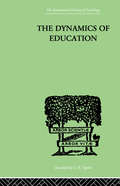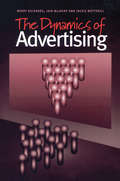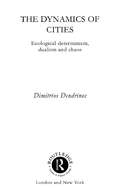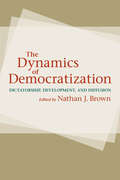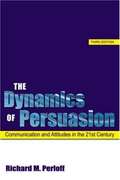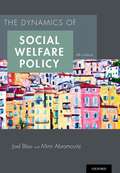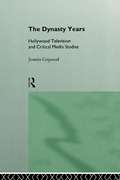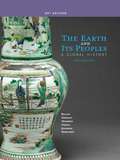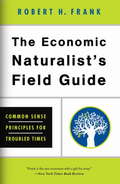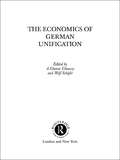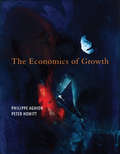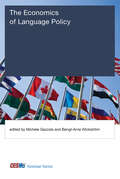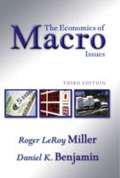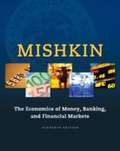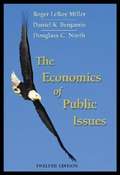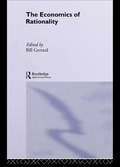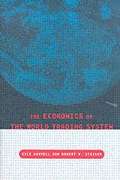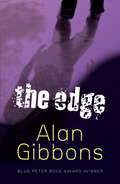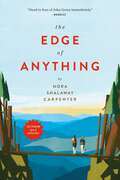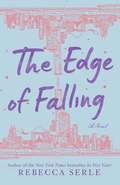- Table View
- List View
The Dynamics Of Education: A METHODOLOGY OF PROGRESSIVE EDUCATIONAL THOUGHT (International Library Of Psychology)
by Taba, HildaFirst published in 1999. Routledge is an imprint of Taylor & Francis, an informa company.
The Dynamics of Advertising
by Iain MacRury Jackie Botterill Barry RichardsThe authors suggest that advertisments, while important in our daily emotional self-management, are far more closely linked to the pragmatics of everyday life than their symbolic richness might suggest. Recent trends in advertisment content point to an important shift in our relationship to goods that reflects an increasing preoccupation with risk management.
The Dynamics of Cities: Ecological Determinism, Dualism and Chaos
by Dimitrios DendrinosDimitrios Dendrinos, an expert in the application of non-linear dynamics and chaos theory to the subject of urban and regional dynamics, focuses here on fundamental issues in population growth and decline. He approaches the topic of urban growth and decline within a global system perspective, viewing the rise and fall of cities, industries and nations as the result of global interdependencies which lead to unstable dynamics and widespread dualisms. Professor Dendrinos provides valuable insights into the evolution of human settlements and considers the possible futures open to the giant cities of the world.
The Dynamics of Democratization: Dictatorship, Development, and Diffusion
by Nathan J. BrownThe explosive spread of democracy has radically transformed the international political landscape and captured the attention of academics, policy makers, and activists alike. With interest in democratization still growing, Nathan J. Brown and other leading political scientists assess the current state of the field, reflecting on the causes and diffusion of democracy over the past two decades.The volume focuses on three issues very much at the heart of discussions about democracy today: dictatorship, development, and diffusion. The essays first explore the surprising but necessary relationship between democracy and authoritarianism; they next analyze the introduction of democracy in developing countries; last, they examine how international factors affect the democratization process. In exploring these key issues, the contributors ask themselves three questions: What causes a democracy to emerge and succeed? Does democracy make things better? Can democracy be successfully promoted? In contemplating these questions, The Dynamics of Democratization offers a frank and critical assessment of the field for students and scholars of comparative politics and the political economy of development. Contributors: Gregg A. Brazinsky, George Washington University; Nathan J. Brown, George Washington University; Kathleen Bruhn, University of California at Santa Barbara; Valerie J. Bunce, Cornell University; José Antonio Cheibub, University of Illinois at Urbana-Champaign; Bruce J. Dickson, George Washington University; M. Steven Fish, University of California at Berkeley; John Gerring, Boston University; Henry E. Hale, George Washington University; Susan D. Hyde, Yale University; Craig M. Kauffman, George Washington University; Staffan I. Lindberg, University of Florida; Sara Meerow, University of Amsterdam; James Raymond Vreeland, Georgetown University; Sharon L. Wolchik, George Washington University
The Dynamics of Persuasion: Communication and Attitudes in the 21st Century
by Richard M. PerloffA textbook revised from the 1993 first edition not only to incorporate events and changes in the technology of communication, but also to focus more on the role theory and research play in persuasion in American society, and the ethical implications of ideas and research. Annotation (c)2003 Book News, Inc., Portland, OR (booknews.com)
The Dynamics of Social Welfare Policy (Fourth Edition)
by Joel Blau Mimi AbramovitzThe Dynamics of Social Welfare Policy uses the lens of an innovative policy model and an emphasis on social change to break new ground in social welfare policy texts. Starting from the explicit premise that every kind of social work practice embodies a social policy, the book stresses that policy knowledge enables social workers to help clients as well as to help themselves. Drawing on this awareness, the text then makes the standard social welfare policy material come alive by asking two new questions: 1) what factors trigger social change in these social policies?; and 2) how do these factors affect the social policies that influence what social workers actually do? To answer these questions, it develops a five-part policy model, which shows, through full chapters on each subject, how economics, politics, ideology, social movements, and the history of social welfare define social welfare policy.
The Dynasty Years: Hollywood Television and Critical Media Studies (Comedia)
by Jostein GripsrudThe Dynasty Years documents and analyses in detail 'the Dynasty phenomenon', the hotly debated success of the Hollywood-made 'Rolls Royce of a primetime soap' which heralded a profound transformation of European television.From the operatic camp of Krystle and Alexis' fight in the lilypond or the Moldavian wedding massacre to the unprecedented gay sub-plot, Dynasty represented, in the words of co-producer Esther Shapiro, "the ultimate dollhouse fantasy for middle-aged women". Using evidence from audience survey results, newspaper and magazine clippings and letters to broadcasters and drawing on semiotics, psychoanalysis, feminism and critical social theories, Jostein Gripsrud examines every aspect of Dynasty's production, reception and context.The result is a groundbreaking critical study. Jostein Gripsrud offers a theoretical but empirically grounded critique of many central positions in media studies, including notions of 'audience resistance' and the 'sovereign' audience and its freedom in meaning-making, arguing against what he perceives as the uncritical celebrations of the soap-opera genre in much contemporary media criticism.
The Early Years: Assessing and Promoting Resilience in Vulnerable Children 1
by Brigid Daniel Sally WassellThis clear and practical workbook shows the importance of encouraging resilience in pre-school children who live in challenging circumstances. Focusing on assessment of need, Brigid Daniel and Sally Wassell show how to evaluate resilience using checklists and background information. They explain that children in their early years gain resilience from a range of experiences, including attachment relationships, opportunities to develop self-esteem and learning to understand others and behaving in a positive way towards them. With this in mind, they set out ways of encouraging pro-social behaviour in young children: involving them in the process of evaluation, giving support to the parent or carer of the child, and using activities to nurture the child's `theory of mind'. Including guidance on ongoing monitoring and supported by case studies from practice, this book is an essential guide to nurturing resilience for all those who work with young children and their families. The workbook stands alone but also forms part of a set along with two other resilience resources on The School Years and Adolescence. The complete set can be bought together at a reduced price.
The Earth And Its Peoples: A Global History (AP Edition)
by David Northrup Lyman Johnson Steven Hirsch Richard Bulliet Pamela Crossley Daniel HeadrickFeaturing a beautiful new design, THE EARTH AND ITS PEOPLES, Sixth Edition, presents world history in a balanced, global framework, shifting the focus away from political centers of power. This truly global world history book employs a fundamental theme-the interaction of human beings and the environment-to compare different times, places, and societies. Special emphasis is given to technology (in its broadest sense) and how technological development underlies all human activity.
The Eastern Gate: War and Peace in Nagaland, Manipur and India's Far East
by Sudeep ChakravartiTraders, Pushers, Soldiers, Spies.A pivot for India&’s Act-East policy. The gateway to a future of immense possibilities from hydrocarbons to regional trade over land and water that could create a new Silk Route. A bulwark against China. A cradle of climate change dynamics and migration. &‘Northeast&’ India, the appellation with which India&’s far-east is known, is all this and more.Alongside hope and aspiration, it is also home to immense ethnic and communal tension, and a decades-old Naga conflict and the high-profile peace process that involves four gateway states—Nagaland, Manipur, Arunachal Pradesh and Assam—and several million people. It&’s among the most militarized zones in the world. It&’s a playground of corruption and engineered violence. Only real peace, and calm in both Myanmar and Bangladesh, will unlock this Eastern gate.A keen observer and frequent chronicler of the region, Sudeep Chakravarti has for several years offered exclusive insights into the Machiavellian—Chanakyan—world of the Naga and other conflicts and various attempts to resolve these. He now melds the skills of a journalist, analyst, historian and ethnographer to offer inside stories and a ringside view to the tortuous, no-holds-barred attempts at resolving conflict.Employing a &‘dispatches&’ style of storytelling, and interviews with rebel leaders, politicians, bureaucrats, policymakers, security specialists and operatives, gunrunners, &‘narcos&’, peace negotiators and community leaders, Chakravarti&’s narrative provides a definitive guide to the transition from war to peace, even as he keeps a firm gaze on the future. The Eastern Gate is a tour de force that captures this story of our times.
The Economic Naturalist's Field Guide: Common Sense Principles for Troubled Times
by Robert H. FrankAsk a dozen talking heads about the course of action we should take to right the economy and you'll get thirteen different answers. But what if we possessed a handful of basic principles that could guide our decisions-both the personal ones about how to save and spend but also those national ones that have been capturing the headlines?Robert H. Frank has been illustrating these principles longer and more clearly than anyone else. In The Economic Naturalist's Field Guide, he reveals how they play out in Washington, on Wall Street, and in our own lives, covering everything from healthcare to tax policy to everyday decisions about what we do with our money. In today's uncertain economic climate, The Economic Naturalist's Field Guide's insights have more bearing than ever on our pocketbooks, policies, and personal happiness.
The Economics of German Unification
by A. Ghanie Ghaussy Wolf SchäferGerman unification is proving much more difficult than was originally envisaged. The integration of two national economies with different economic orders, different sectoral structures and divergent levels of development seems set to take a long time. This timely examination of the major issues involved emphasises the impact of unification on diffe
The Economics of Growth (The\mit Press Ser.)
by Philippe Aghion Peter W. HowittA comprehensive, rigorous, and up-to-date introduction to growth economics that presents all the major growth paradigms and shows how they can be used to analyze the growth process and growth policy design.This comprehensive introduction to economic growth presents the main facts and puzzles about growth, proposes simple methods and models needed to explain these facts, acquaints the reader with the most recent theoretical and empirical developments, and provides tools with which to analyze policy design. The treatment of growth theory is fully accessible to students with a background no more advanced than elementary calculus and probability theory; the reader need not master all the subtleties of dynamic programming and stochastic processes to learn what is essential about such issues as cross-country convergence, the effects of financial development on growth, and the consequences of globalization. The book, which grew out of courses taught by the authors at Harvard and Brown universities, can be used both by advanced undergraduate and graduate students, and as a reference for professional economists in government or international financial organizations.The Economics of Growth first presents the main growth paradigms: the neoclassical model, the AK model, Romer's product variety model, and the Schumpeterian model. The text then builds on the main paradigms to shed light on the dynamic process of growth and development, discussing such topics as club convergence, directed technical change, the transition from Malthusian stagnation to sustained growth, general purpose technologies, and the recent debate over institutions versus human capital as the primary factor in cross-country income differences. Finally, the book focuses on growth policies—analyzing the effects of liberalizing market competition and entry, education policy, trade liberalization, environmental and resource constraints, and stabilization policy—and the methodology of growth policy design. All chapters include literature reviews and problem sets. An appendix covers basic concepts of econometrics.
The Economics of Language Policy (CESifo Seminar Series)
by Bengt-Arne Wickström Michele GazzolaInsights from the application of economic theories and research methods to the management of linguistic diversity in an era of globalization.In an era of globalization, issues of language diversity have economic and political implications. Transnational labor mobility, trade, social inclusion of migrants, democracy in multilingual countries, and companies' international competitiveness all have a linguistic dimension; yet economists in general do not include language as a variable in their research. This volume demonstrates that the application of rigorous economic theories and research methods to issues of language policy yields valuable insights. The contributors offer both theoretical and empirical analyses of such topics as the impact of language diversity on economic outcomes, the distributive effects of policy regarding official languages, the individual welfare consequences of bilingualism, and the link between language and national identity. Their research is based on data from countries including Canada, India, Kazakhstan, and Indonesia and from the regions of Central America, Europe, and Sub-Saharan Africa. Theoretical models are explained intuitively for the nonspecialist. The relationships among linguistic variables, inequality, and the economy are approached from different perspectives, including economics, sociolinguistics, and political science. For this reason, the book offers a substantive contribution to interdisciplinary work on languages in society and language policy, proposing a common framework for a shared research area.ContributorsAlisher Aldashev, Katalin Buzási, Ramon Caminal, Alexander M. Danzer, Maxime Leblanc Desgagné, Peter H. Egger, Ainhoa Aparicio Fenoll, Michele Gazzola, Victor Ginsburgh, Gilles Grenier, François Grin, Zoe Kuehn, Andrea Lassmann, Stephen May, Serge Nadeau, Suzanne Romaine, Selma K. Sonntag, Stefan Sperlich, José-Ramón Uriarte, François Vaillancourt, Shlomo Weber, Bengt-Arne Wickström, Lauren Zentz
The Economics of Macro Issues
by Roger Leroy Miller Daniel K. BenjaminThe Economics of Macro Issues is a collection of brief, relevant readings that spark independent thinking and classroom discussions in principles of economics courses. The Miracle of Economic Growth:Rich Nation, Poor Nation; Return of the Luddites: Technophobia and Economic Growth; The Dragon and the Tigers: Economic Growth in Asia; Immigrants and Economic Growth; Outsourcing and Economic Growth; Poverty and Economic Growth. The Business Cycle, Unemployment, and Inflation: What's in a Word? Plenty, If it's the "R" Word; The Case of the Disappearing Workers; The Graying of the Workforce; The Problem with Deflation; The Problem with Inflation; Measuring GDP; Fiscal Policy:The Return of Big Government; The Myths of Social Security; Macro Disasters; The Brain Gain; Tax Cuts: When They Matter, When They Don't; Simplifying the Federal Tax System (Don't Hold Your Breath); Raising the Debt Ceiling-What's a Few of Trillion Dollars, More or Less? Monetary Policy and Financial Institutions; The Future of the Fed; New Economy Versus Inflation-targeting; Monetary Policy and Interest Rates; The Savings Glut; Beating the Market; Donr't Worry: Your Deposits are Insured; International Trade and Finance; The Opposition to Free Trade; The $750,000 Job; The Trade Revolution in Textiles; The Trade Deficit; The Dollar versus the Euro; Winner Take All? For all readers interested in macroeconomic issues.
The Economics of Money, Banking and Financial Markets
by Frederic S. MishkinFor courses in Money and Banking or General Economics. An Analytical Framework for Understanding Financial Markets The Economics of Money, Banking and Financial Markets brings a fresh perspective to today's major questions surrounding financial policy. Influenced by his term as Governor of the Federal Reserve, Frederic Mishkin offers students a unique viewpoint and informed insight into the monetary policy process, the regulation and supervision of the financial system, and the internationalization of financial markets.
The Economics of Public Issues
by Roger Leroy Miller Douglass C. North Daniel K. BenjaminFor years, The Economics of Public Issues has shown students the power of economics in explaining the world around us. the twelfth edition continues the tradition of illustrating traditional economic principles through contemporary issues by offering eight all-new chapters on compelling topics such as the economics of traffic jams, slave redemption in Sudan, and the Microsoft monopoly. the authors' clear presentation and straightforward applications make the study of economics entertaining and informative. The Economics of Public Issues is an essential source of engaging, relevant readings for a principles of economics course, and an excellent way to spark independent thinking in political economy, public policy, and social issues courses.
The Economics of Rationality
by Bill GerrardThe concept of rationality is the heart of modern economics. Neo-classical theory seems unable to proceed without assuming a rational agent seeking to find the optimal means to a well defined end. Yet many find this uncritical treatment of rationality problematic. It takes little account of culture history or creativity and consequently many economists find this insistence on rationality of little use when trying to explain a wide range of economic phenomena. Increasingly these include a large number of game theorists and others involved in mainstream theory as well as those typically opposed to neo-classicism. The Economics of Rationality contains a number of critical perspectives on the treatment of rationality in economics.
The Economics of the Construction Industry
by Gerald FinkelThe American construction industry, reponsible for nearly 4% of the nation's Gross Domestic Product, directly employs over five million people and provides millions of additional support jobs in related fields. This book provides an introductory overview of the economic aspects of the industry, including the historical development of building activity from earliest times to modern day market-based construction, including the work of individual artisans to complex construction unions. The book explores current trends in labor force participation; the measurement of industry performance; the determinants of investment; government involvement; competition; wage determination; training; and worker safety.
The Economics of the World Trading System
by Kyle Bagwell Robert W. StaigerWorld trade is governed by the rules of the World Trade Organization (WTO), the successor to the General Agreement on Tariffs and Trade (GATT). The WTO sets rules of conduct for the international trade of goods and services and for intellectual property rights, provides a forum for multinational negotiations to resolve trade problems, and has a formal mechanism for dispute settlement. It is the primary institution working, through rule-based bargaining, at freeing trade. In this book, Kyle Bagwell and Robert Staiger provide an economic analysis and justification for the purpose and design of the GATT/WTO. They summarize their own research, discuss the major features of the GATT agreement, and survey the literature on trade agreements. Their focus on the terms-of-trade externality is particularly original and ties the book together. Topics include the theory of trade agreements, the origin and design of the GATT and the WTO, the principles of reciprocity, the most favored nation principle, terms-of-trade theory, enforcement, preferential trade agreements, labor and environmental standards, competition policy, and agricultural export subsidies.
The Economy of Algorithms: AI and the Rise of the Digital Minions
by Marek Kowalkiewicz&‘A damn well-written book . . . a thrilling, entertaining whirlwind tour of different AI algorithms and their industry applications.&’ —Tobias Lange, Senior Vice President, Siemens Digital Industries Software Welcome to the economy of algorithms. It&’s here and it&’s growing. In the past few years, we have been flooded with examples of impressive technology. Algorithms have been around for hundreds of years, but they have only recently begun to &‘escape&’ our understanding. We are so impressed by what they can do that we give them a lot of agency. But because they are so hard to comprehend, this leads to all kinds of unintended consequences. In the twentieth century, we had the economy of corporations. In the first two decades of the twenty-first century, we saw the emergence of the economy of people, otherwise known as the digital economy, enabled by the internet. Now we&’re seeing a new economy take shape: the economy of algorithms. – How can we use algorithms to automate the boring parts of our jobs, enhance decision-making and drive innovation? – Where is the line between algorithmic &‘help&’ and surveillance? – Can an algorithm take your job? – How do you advertise to a fridge? – Do algorithms dream of electric sheep? – Why is it so hard to predict where technology will go next? These questions and more are answered by this exciting and ground-breaking book, which includes nine rules for flourishing in the new economy of algorithms.
The Edge
by Alan Gibbons¿We¿ve got to go. Now.¿ It¿s early morning and Danny¿s mother is at his bedside, urging him to get up. They¿re on the run ¿ from Chris, his mother¿s boyfriend, a violent man who beats them both up, and won¿t let them go. Chris pursues Danny and his mother from London to the north, where they take refuge with Danny¿s grandparents. But even there, nothing is safe. Danny is conspicuous as the only mixed-race boy in their small community, and with the ever-present threat of discovery, he has to learn how to live continually on the edge. A tense and chilling story to which the chase gives terrific drama, THE EDGE shows the depth of character, and the understanding of the predicaments of children today, that gives Alan Gibbons his special quality.
The Edge of Anything
by Nora Shalaway CarpenterStarred Kirkus Review!A vibrant #ownvoices debut YA novel about grief, mental health, and the transformative power of friendship.Len is a loner teen photographer haunted by a past that's stagnated her work and left her terrified she's losing her mind. Sage is a high school volleyball star desperate to find a way around her sudden medical disqualification. Both girls need college scholarships. After a chance encounter, the two develop an unlikely friendship that enables them to begin facing their inner demons.But both Len and Sage are keeping secrets that, left hidden, could cost them everything, maybe even their lives.Set in the North Carolina mountains, this dynamic #ownvoices novel explores grief, mental health, and the transformative power of friendship.
The Edge of Falling: A Novel
by Rebecca SerleFrom the New York Times bestselling author of In Five Years comes a dark and seductive novel about the dangers of obsessive love.Caggie never wanted to be a hero, but some things are decided for us. Growing up among Manhattan&’s social elite, Caggie always had everything she could want, including a storied last name. But after saving a girl from the brink of suicide, Caggie becomes infamous, and now all she wants is to be left alone. After all, she&’s still reeling from the death of her younger sister last January, the subsequent destruction of her relationship with her high school boyfriend, Trevor, and the way in which her family has since fallen apart. So when mysterious Astor appears on the Upper East Side, he just might be the rescue she needs. But what is he hiding? As life as she knew it begins to unravel, Caggie realizes Astor&’s past may be as dark as her own. And in a world in which she&’s been branded a hero, Caggie will soon discover that no one can save you…not until you save yourself.
The Edge of Summer
by Erica GeorgeFans of Sarah Dessen and Morgan Matson will be swept away by this big-hearted novel about one girl navigating first loss and first love during a summer on Cape Cod. Saving the whales has been Coriander Cabot and her best friend Ella&’s dream since elementary school. But when tragedy strikes, Cor is left to complete the list of things they wanted to accomplish before college alone, including a marine biology internship on Cape Cod. Cor's summer of healing and new beginnings turns complicated when she meets Mannix, a local lifeguard who completely takes her breath away. But she knows whatever she has with Mannix might not last, and that her focus should be on rescuing the humpback whales from entanglement. As the tide changes, Cor finds herself distracted and struggling with her priorities. Can she follow her heart and keep her promise to the whales and her best friend?
